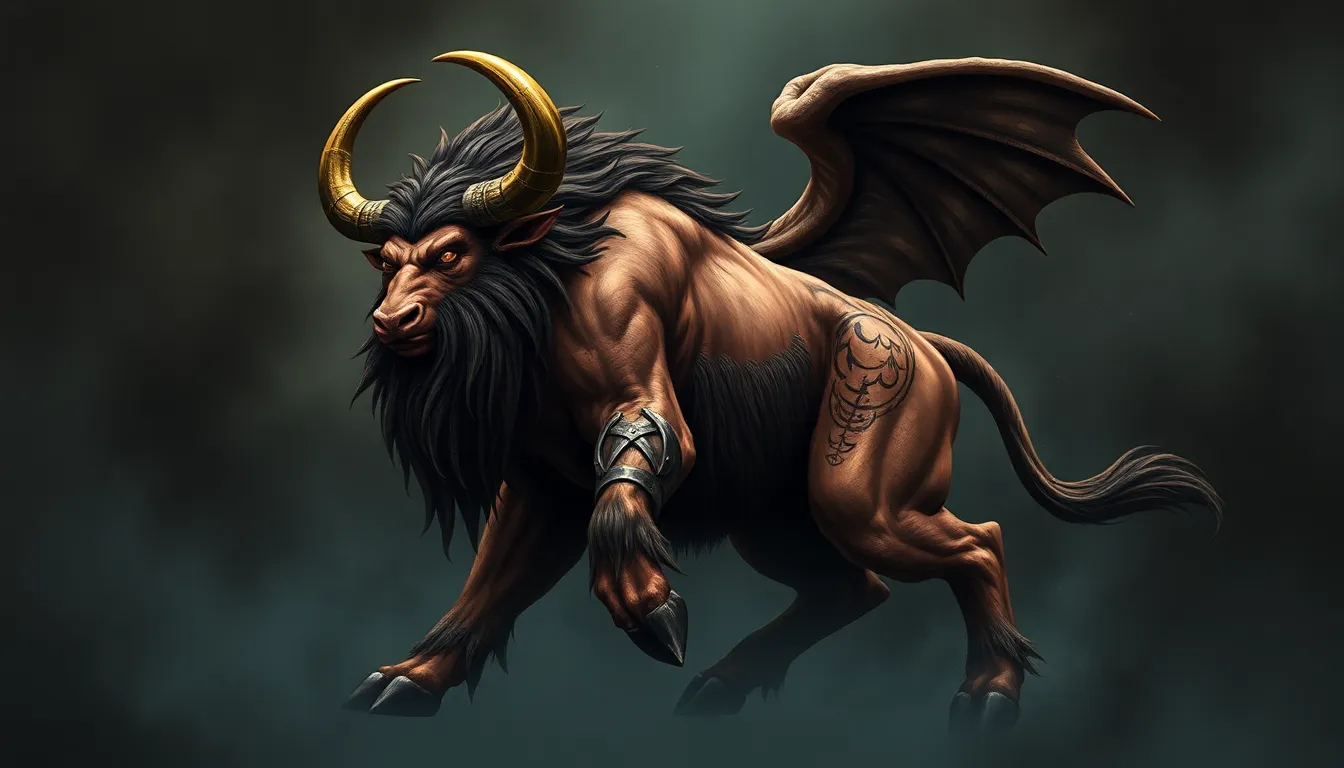The Minotaur in Comparative Mythology: Similarities with Other Cultures
I. Introduction
The Minotaur, a creature with the body of a man and the head of a bull, is one of the most iconic figures in Greek mythology. Originating from the tale of King Minos of Crete, the Minotaur’s story intertwines themes of power, sacrifice, and the human condition. The myth serves as a profound narrative that reflects the complexities of human nature and societal structures.
Comparative mythology plays a crucial role in understanding how different cultures express similar themes and archetypes through their narratives. By examining the Minotaur alongside mythological creatures from various cultures, we can gain deeper insights into the universal themes that resonate across time and geography.
This article aims to explore the similarities between the Minotaur and mythological creatures from other cultures, highlighting the shared motifs and archetypes that enrich our understanding of human storytelling.
II. The Minotaur: A Brief Overview
The Minotaur is a creature born from the union of Pasiphaë, the wife of King Minos, and a magnificent bull sent by the god Poseidon. This unnatural birth signifies the intermingling of human and animal, a recurring theme in mythology that raises questions about identity and morality.
The Minotaur resides in the Labyrinth, an elaborate maze designed by Daedalus to contain this fearsome creature. The Labyrinth symbolizes confusion, entrapment, and the complexity of the human psyche. The Minotaur’s existence serves as a cautionary tale about unchecked desires and the consequences of hubris.
Key themes associated with the Minotaur myth include:
- Duality: The Minotaur embodies the dual nature of humanity—civilized and savage.
- Sacrifice: The myth involves the sacrifice of Athenian youths to appease the beast.
- Human-Animal Hybrids: The Minotaur represents the blurred lines between human and animalistic instincts.
III. Human-Animal Hybrids in World Mythologies
Human-animal hybrids appear in various mythologies, often embodying significant cultural meanings. These creatures often represent the intersection of the divine and the earthly, the civilized and the primal.
Prominent examples of human-animal hybrids include:
- Egyptian Gods: Deities like Anubis (with a jackal’s head) and Horus (with a falcon’s head) exemplify the fusion of human and animal traits.
- Hindu Deities: Figures such as Ganesha (the elephant-headed god) and Narasimha (the lion-man avatar of Vishnu) illustrate the cultural significance of hybrid beings.
The psychological and symbolic implications of these hybrids often reflect humanity’s struggle with its instincts, fears, and aspirations. They serve as metaphors for the complex nature of existence and the dualities within the human experience.
IV. The Labyrinth Motif in Global Myths
The motif of the labyrinth appears in various mythologies, often representing a journey of trials, transformation, and self-discovery. Beyond the Greek narrative, labyrinths serve significant functions in other cultures.
Examples of labyrinths in global myths include:
- Mesoamerican Ballgame: The ballgame was often seen as a ritualistic journey through a labyrinthine space, embodying themes of life, death, and rebirth.
- Hindu Concept of Maya: The illusionary nature of reality in Hindu philosophy can be likened to a labyrinth, where one must navigate through illusions to reach enlightenment.
Labyrinths often function as places of trials and transformation, where heroes confront their fears, gain wisdom, and emerge changed. Such structures are critical in understanding the narrative arcs of various mythologies and their emphasis on personal growth.
V. Themes of Sacrifice and Heroism
The theme of sacrifice is central to the Minotaur myth, highlighting the dark aspects of human nature and societal expectations. The Athenians sacrificed youths to the Minotaur, reflecting a culture that often demanded significant personal costs for the greater good.
Similar sacrificial legends can be found in other cultures, including:
- Aztec Mythology: The Aztecs performed human sacrifices to appease their gods, believing that such offerings were necessary for the continuation of life and the cosmos.
- Norse Mythology: In Norse tales, the gods often face dire consequences, and sacrifices are made to maintain balance in the cosmos, as seen in the story of Odin sacrificing himself on Yggdrasil.
Heroism is also a vital theme, as heroes confront monstrous beings to protect their communities. In the case of Theseus, his journey to slay the Minotaur signifies the triumph of human courage over chaos and savagery, a theme echoed throughout various mythologies.
VI. The Role of Women in Minotaur and Comparative Myths
Female characters play significant roles in the Minotaur myth, notably Ariadne and Pasiphaë. Ariadne, with her thread, aids Theseus in navigating the Labyrinth, showcasing themes of guidance and support. Pasiphaë, as the Minotaur’s mother, represents the consequences of forbidden desires and the intertwining of love and monstrosity.
In comparative mythology, similar female figures include:
- Medusa: A tragic figure whose transformation into a monster reflects themes of victimization and the power of the feminine.
- Kali: The Hindu goddess who embodies destruction and creation, challenging traditional gender norms and representing fierce femininity.
These characters illuminate the complexities of gender roles within their narratives, revealing cultural attitudes towards femininity, power, and morality.
VII. Psychological Interpretations of the Minotaur and Comparable Figures
The Minotaur can be viewed as a representation of the unconscious mind and the shadow self, reflecting the darker aspects of human nature that society often suppresses. This interpretation aligns with Carl Jung’s theories on the shadow archetype, emphasizing the importance of acknowledging and integrating these repressed elements.
Similar psychological interpretations exist in other mythologies:
- The Sphinx: A creature that poses riddles, symbolizing the challenge of confronting one’s inner fears and the quest for knowledge.
- Fenrir: In Norse mythology, the wolf Fenrir embodies chaos and destruction, representing the inevitability of confronting one’s inner demons.
The relevance of these psychological interpretations underscores the timeless nature of these myths, as they continue to resonate with our understanding of human psychology and the complexities of the human experience.




